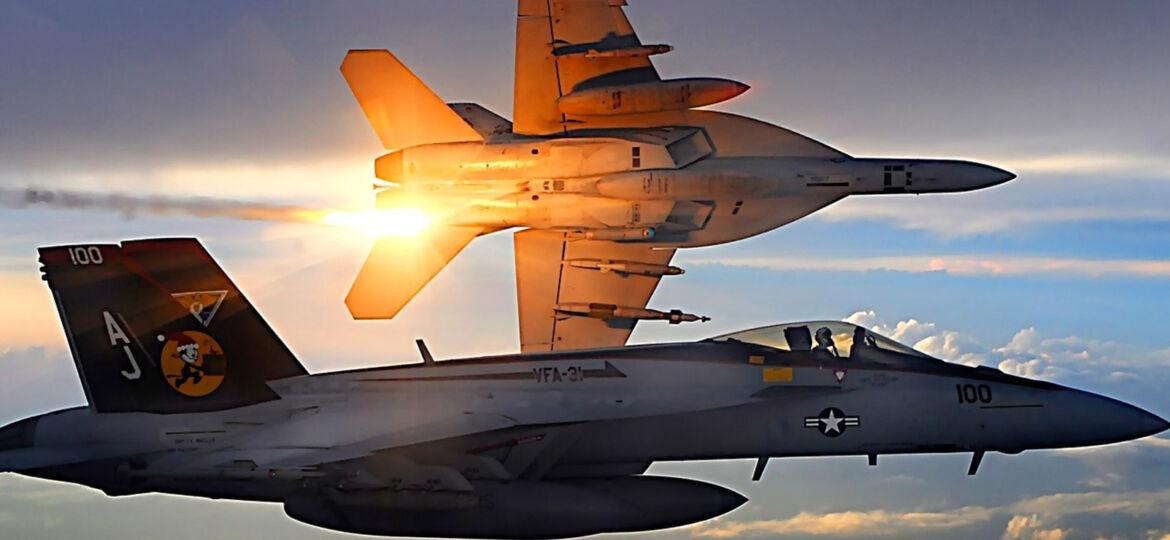
WHY THIS MATTERS IN BRIEF
The Pentagons new autonomous, swarming drones can acquire, identify and take out any target.
Swarms of robots are nothing new, universities have been playing around with them for years, but now the Pentagon has gone one step further – as well as scaled it up. They’ve been experimenting with swarming drones that can communicate and co-ordinate with each other to complete a whole multitude tasks, and they appear to be ruthlessley efficient. Called “Perdix,” after a character from Greek mythology who was changed into a Partridge, the autonomous cohorts of drones operate in cooperative swarms of 20 or more, working together towards a single goal.
In footage taken over the skies of Naval Air Weapons Station China Lake, a trio of F/A-18 Super Hornet fighters released a total of 103 Perdix drones, which are capable of withstanding ejection at speeds of up to Mach 0.6 and temperatures as low as minus 10 degrees Celsius, from small pods mounted on hardpoints on both wings.
GPS data, combined with a map of the area, shows that during the tests the fighters released their Perdix drones in a long line their flight path. The drones formed up at a preselected point and then headed out to perform four different missions. Three of the missions involved hovering over a target while the fourth mission involved forming a 100-meter-wide circle in the sky.
According to the Department of Defense, the demonstration showed off Perdix’s collective decision-making, adaptive formation flying, and self-healing abilities. The drones collectively decide that a mission has been accomplished, fly on to the next mission, and carry out that one. The benefit of a swarm is that if one drone drops out – and a few appear to crash- the group can rearrange itself to maintain coverage.
Developed by students at the MIT, who also coincidentally were one of the universities experimenting with robot swarms a few years ago, the Perdix drones which are powered by lithium polymer battery packs, are inexpensive and feature two sets of small carbon fiber wings, a rear propeller and a kevlar composite fuselage.
There are a multitude of uses for such a drone swarm. The drones could be released by fighters to provide reconnaissance for troops on the ground, hunt enemy forces and report their location, and they could also be used to jam enemy communications, form wide range mesh communications network, or provide persistent surveillance of a particular area. alternatively they could also be loaded with small explosive charges and attack individual enemy soldiers. In air-to-air combat flock together to fool enemy radar systems, and missiles, and spoof aircraft by pretending to be much larger targets. and many more options besides.

















[…] Source link […]
[…] the rest of the US military apparatus. Recently, for example, we saw a demonstration of F/A-18’s releasing hundreds of drones into the sky from pods slung beneath their bellies, and as the US military steps up talk of the […]